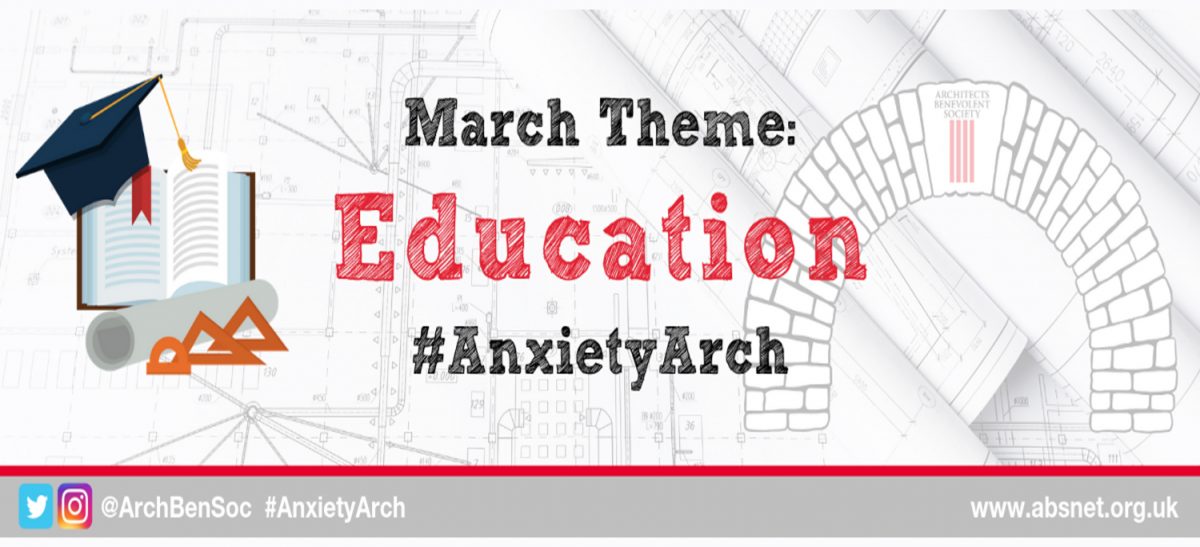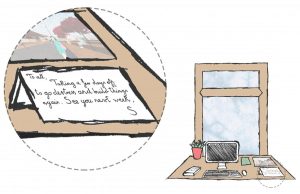Home | Our news & views |
Architectural Education; a shared responsibility – Guest Post by Scott McAulay

Home | Our news & views |


“For every architecture student, one search carries more pressure than any other: that first job hunt for a Year Out placement. Our educators shower us in disarming and intoxicating optimism, occasionally even quoting department employment statistics to distract from the realities of a fluctuating job market. The possibility of not finding one and returning to the course right away is very real, and to not find one garners varying responses from peers and tutors. It can also shake ones’ belief in their own abilities, even though it often comes down to luck and/or personal connections – so it should be not be taboo.
My own search for a Part One placement ended this way: dozens upon dozens of applications, numerous interviews across Scotland, and yet no joy. I am an outspoken advocate for compassionate and restorative design, and have ecological construction experience, so I tailored my search to look for opportunities with practices that embraced my values. Much to the discouragement of department advisors, instead encouraging downplaying this or abandoning it entirely, claiming it was likely impossible.
This both demoralised and troubled me, yet I was optimistic that if I persevered I would – like most of my friends already had – find something. But, I did not, and my Post-Brexit job hunt – like that of many students’ that summer – was unfruitful.
My self-confidence took a battering, fuelling accumulating anxieties in my mind. Was it because I was simply not good enough to be considered for jobs? Would there be any chance of practicing the way I intended to? And, was I even capable of doing so?
Living with depression, these recurring reflections wore me down and eventually overcame my resilience, leaving me burnt out and painfully low. Conversations with friends and peers touched upon the subject daily, and I found myself feeling traces of an uncomfortable, unspoken shame whenever asked. Unable to return good news, many conversations dropped dead after readably-awkward reactions and never recommenced.
Thankfully, I had friends delivering a straw bale course that summer, so I checked if there were places left – which there were, so intent on distracting myself from my circumstances and state of mind, I went. I arrived amidst a heatwave and bout of sunshine like no other, and enjoyed catching up with a friend whilst making new ones, learning and getting happily stuck in. In the end I spent four days immersed in the rhythmic and therapeutic construction of straw bale walls and one on a mutual friend’s off-grid woodland stewardship, and I felt as if I had been detoxed entirely.
One downside of spending 80% of our time indoors is that we simply do not get enough sunlight to satisfy our body’s requirements of Vitamin D; solariums were a key component of Roman hospitals for a reason. The next time you feel the heat of the sun on your face, stop momentarily and notice how your mood lightens: enjoy it.
Even better for you than being outdoors, is to be active outdoors. Recent research from the Down to Earth Project found the effects of outdoor activity to be incredibly helpful.
My advice to students is to get out of the studio regularly; be active often whether athletics, hiking, sports, walking or yoga; and should you get the chance to build something, dive at it – the further afield and more remote the better. Your health and happiness shall benefit, and your education too. Everyone’s route to practice is different – my own came about in a roundabout way by immersing myself in events that, and learning about what, interested me. Do not compare yours’ to another’s. And, do not be swayed to abandon your ideals: they often pleasantly surprise people, and they may well be potential employers in your future.
My advice to educators is to recognise that not every student you have will follow one prescriptive career path. Apprenticeships are on the rise again, and students experiences out-with the studio vary wildly. On average, one in three of your students is receiving treatment, or has before, for their mental health, so be conscious of what you say: critique constructively and treat them kindly. Crucially, if a student has an interest or passion, encourage it: their work is no extension nor reflection of your own.
Above all, do not discourage them: you once stood where they did, and we all share the responsibility of addressing the toxicities existent in our culture. Do not tell them architecture is not for them because they are struggling; and do not tell them students cannot change the world from within architecture school. Some of us will eventually find ways to positively and therapeutically channel those sentiments instead, and articles like this shall be penned; calling on us all to play a part in architectural culture’s compassionate progression.”